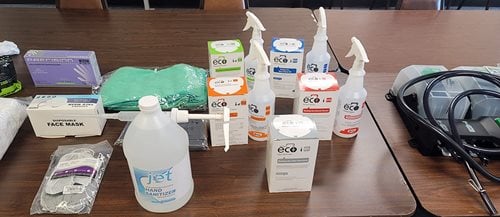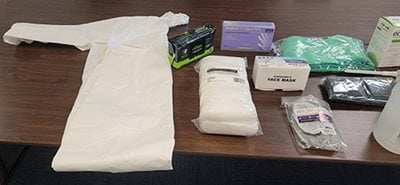At Rural Communities Housing Development Corporation (RCHDC), a NeighborWorks America organization in Northern California, tenants were struggling. About three-fourths of the organization's residents have their housing subsidized, and those subsidies are adjustable, so it wasn't so much that they needed help paying their rent during the time of COVID as it was that they needed contact – even at a distance.
The organization used a Rental Resilience grant, made possible by a collaboration between NeighborWorks America and the Wells Fargo Foundation, to help. They designated a staff member to check in with people in 42 communities across six counties, including seniors, families, farm laborers, mentally ill residents, and individuals at risk of homelessness.
"I've called all of our tenants several times through," says Felicia Eriksen, resident services coordinator, and the staff member who shifted all her attention to residents' needs. "The biggest thing people want is to talk. They're lonely with COVID. They're much more isolated than they were before."
 Eriksen says that when she surveys residents about their well-being, she talks to at least 25 people a day. "Sometimes I end up going to a lot of doors, with a mask on, if they don't answer phones or don't have them. They're very receptive.
Eriksen says that when she surveys residents about their well-being, she talks to at least 25 people a day. "Sometimes I end up going to a lot of doors, with a mask on, if they don't answer phones or don't have them. They're very receptive.
"The single most rewarding thing about my job is to connect with the residents on a deeper human level," she says. "It may be to listen quietly while they vocalize a complaint or hear about their children or worries over their food insecurity. Being able to help connect them with viable resources, in some cases to survive these times, is a true joy."
Eriksen says she's been able to connect community members with food banks and other services. "Food banks do deliveries at a lot of the properties and residents didn't know about that," she says. "A lot of people didn't know what kinds of things were available to them. I try to keep up with that so I can be a resource."
Daniel McIntire, director of property management, says the pandemic, which required people to shelter in place, was traumatic for residents. "We needed to make sure residents' primary needs were being taken care of," he says. "Food supplies were becoming tighter."
McIntire says the Rental Resilience funding allowed Eriksen to focus all her time on making sure residents had what they needed. If they didn't, he says, "We connected them. Sometimes, they just want to talk. Especially the seniors. They just want to express their concerns or their stresses, whatever's going on in their life. The further we get into this, the more strained it becomes for our population."
McIntire says the organization keeps up with residents at the 1,263 units in their rental portfolio. "We're working on another round, checking on residents, making sure they're still okay and that they've adapted well."
Do the seniors have enough oxygen? Do families have enough food? What else do they need?
McIntire says they hope to put together a customized packet of information about local resources. Eriksen worked on such a package in the past, when her job had a different focus, "but things have changed significantly during COVID," he says.
Says Eriksen, "They need more resources close to home."
Other parts of the $114,000 Rental Resilience grant went toward finding supplies and personal protective equipment (PPE), McIntire says. During COVID, the organization has additional responsibilities. Normally, when they're working on projects, the state or investors come in to do final inspections. Now, he says, it's RCHDC staff members who have to be onsite, taking photos and sending in reports. Some of the resilience funding from NeighborWorks America and the Wells Fargo Foundation partnership is supporting front-line staff members. It's been a struggle to hire employees during this time, McIntire says. "So it's important to retain employees that make the company work. Without them we'd be up a creek."
Protective equipment includes installing commercial-grade dispensing systems the organization can use hospital-grade cleaners in the common areas. Those spaces, like laundry rooms, are cleaned four times a day, McIntire says. "We bought a lot of masks for staff, and booties." COVID numbers in California are still above 2,000 new cases a day, and RCHDC's residents are considered vulnerable, so caution is key, he says.
Some of the Rental Resilience money is still available. "We haven't spent it all yet," McIntire says. "If people do start showing that they're struggling with rent, we'll be able to send it their way." So far, only 5% of residents have been unable to pay their rents, he says. But at the same time, RCHDC has seen vacant units – those that aren't subsidized – sit on the market much longer, which eventually effects the organization's cash flow, he says. "No one wants to move right now."
Meanwhile, for the tenants living and working in their community, he says, "We want to make sure people have what they need."
McIntire says the Rental Resilience grant has made it easier for him, as director, to make sure the front-line staff has protective gear, "even in the communities that may be struggling to afford such equipment. Taking care of our front-line staff is not only the right thing to do but is critical to the continued affordability of housing provided to the residents."
10/21/2020

